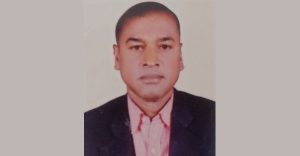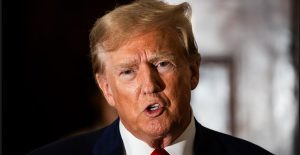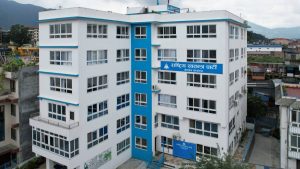Nepal is observing the 111th birth anniversary of its prominent democratic leader Ganeshman Singh on Monday through programs and tributes held across the country. Widely known as the Supreme Commander of the 1990 People’s Movement (Jana Andolan 2046 BS), Singh is celebrated as a figure of sacrifice, integrity, and steadfast commitment to democracy.
After the success of the 1990 People’s Movement, King Birendra had invited Singh to lead the new government as Prime Minister. But Singh, true to his humble nature, declined the offer and instead proposed his colleague Krishna Prasad Bhattarai for the role. That selfless act defined him as a statesman who valued principle over power. His humility and integrity set a lasting moral example in Nepali politics and continue to inspire new generations.
Early Life, Political Awakening, and Exile
Born on November 9, 1915 (Kartik 24, 1972 BS) in Chhetrapati, Kathmandu, Singh came from a respected family but chose a life dedicated to the people. His political consciousness developed early, and by 1940 (1997 BS) he had joined the Praja Parishad, Nepal’s first political party, to fight the Rana regime and push for democracy.
Because of his role in the anti-Rana movement, Singh was imprisoned several times. Before the 1951 revolution, he famously escaped from Bhadragol Jail and fled to India, where he built a strong political alliance with B. P. Koirala. Together, they founded the Nepali National Congress in 1946 (2003 BS), which later evolved into today’s Nepali Congress Party.
During the 1951 revolution, Singh led the armed resistance from the Birgunj front, playing a central role in restoring democracy. He later served as a senior minister in Nepal’s first elected government in 1959 (2015 BS). When King Mahendra took power in the 1960 coup, Singh was imprisoned for eight long years — first in Singha Durbar Prison and later in Sundarijal Detention Center.
Leadership in the Democratic Movement
In 1976 (2033 BS), Singh returned to Nepal with B. P. Koirala under the National Reconciliation Policy and resumed his political struggle against the Panchayat system. He played a decisive role in the 1979 student movement, the national referendum, and led the 1986 (2042 BS) Satyagraha campaign demanding the restoration of democracy.
After Koirala’s death, Singh led the Nepali Congress, dedicating his life to strengthening the party and uniting democratic forces. During the 1990 People’s Movement, he brought together the Nepali Congress and leftist parties, guiding the nationwide uprising that ended the Panchayat regime. As the Supreme Commander, Singh became the unifying symbol of Nepal’s fight for freedom.
Following the 1960 coup, Singh and Koirala were detained together at the Sundarijal Detention Center until 1968 (2025 BS). After their release, they went into exile in India, continuing their campaign for democracy. When they returned in 1976 (2033 BS) under the reconciliation policy, Singh was again arrested at Tribhuvan International Airport and imprisoned for the second time in Sundarijal.
The same detention center was later transformed into the B. P. Museum on September 9, 2004 (Bhadra 24, 2061 BS) to honor their enduring contribution to Nepal’s democratic history.
A Day of Tribute and Reflection
To commemorate the day, the Nepali Congress and its sister organizations have organized programs nationwide. Party leaders and supporters have described Singh as a pillar of Nepal’s democracy, saying his courage, simplicity, and sacrifice remain a timeless source of inspiration for generations to come.






